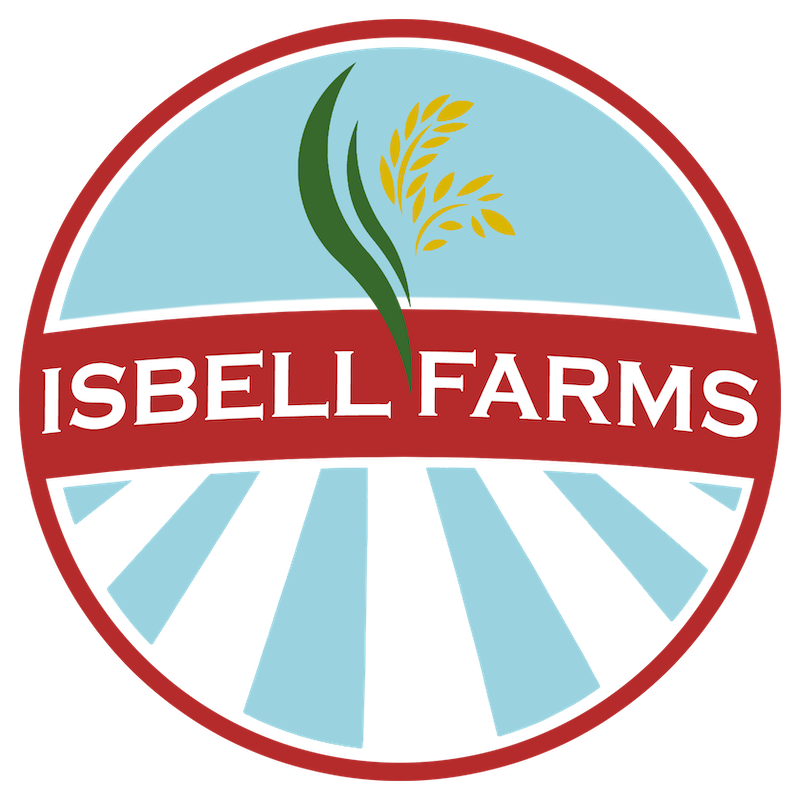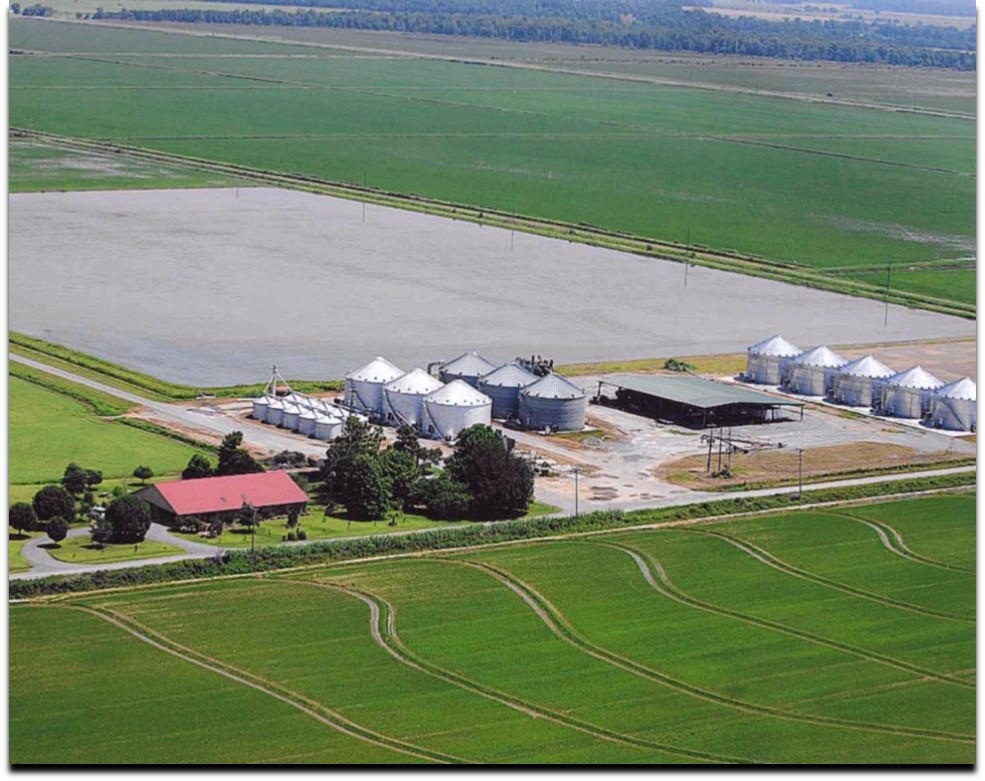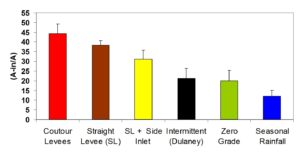Zero Grade
Isbell Farms employs Zero Grade technology on 100% of its acreage.
Rice is often grown in on sloped fields that depend on contour levees (aerial photo graph) or terraces to maintain water depth at intervals down the slope of the field. Though this technique is integral to rice production in some areas, in other areas it is possible to employ Zero Grade technology to decrease water and land use and increase efficiencies.
Zero Grade has become the popular term to refer to fields that have been leveled to the point of no slope or grade (think table top). This configuration saves 30- 50 percent of water used in rice production.
Zero Grade was pioneered on Isbell Farms, leading to hundreds if not thousands of visitors from across the globe to Isbell Farms in the years following. For this and other practices, Leroy and Chris Isbell were named 1996 Rice Farmers of the Year. Leroy Isbell would eventually be recognized for this practice in 2013, the year before his death, by being inducted into the Arkansas Agriculture Hall of Fame.
The Evolution of Zero Grade on Isbell Farms
In the 1960’s our farm began Zero Grade as a way to conserve water. At that time the method to do this was inexact at best. The field elevations were determined using optical transits, and a wooden stake was driven into the ground every 100 feet. These stakes were painted accordingly to represent the amount of dirt to be moved from one location in the field to another in order to remove the slope from the field. For instance, the top four inches of a stake painted red designated a four inch cut. A four inch blue mark indicated four inches of fill dirt was required. The tractor driver would then drive by these stakes and lower a dirt pan blade to cut away four inches of dirt and then travel across the field to deposit it in the blue fill area. All of this was done by informed guesswork. This was the only method available until the late 70s.
In 1977 the first laser leveling equipment became available. We bought two. Now we could set up one tripod with the laser transmitter mounted on top, and move our scrapers with their laser receivers mounted on them into the field and go to work. The laser provided the necessary benchmark from which the tractor could then establish an even grade. How to level the field was now just a matter of setting the transmitter to the desired slope. We chose Zero and never looked back. Though many thought it would not work, it has proven to be a remarkably efficient and sustainable rice producing method.
Years later we have shown that this technique provides at least a thirty percent reduction in water use and significant energy use reduction using the now world-recognized Zero Grade method. This water saving marvel is now being used not only in the U.S., but also in rice growing areas across the globe. Every year we are visited by rice farmers from all over the world looking for water saving methods to be used on their farms.
Bar Graph: Dr. Joe Massey
Cups of water Diagram: Mark Isbell



